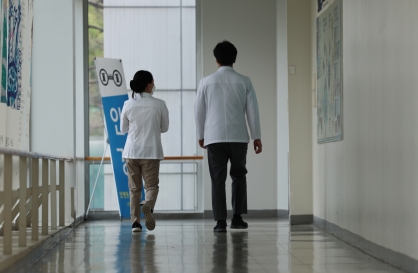[Editorial] Lessons from Italy
Lawmakers urged to pursue political reform
By KH디지털2Published : Oct. 19, 2015 - 17:35
Last week, Italian lawmakers set a great example of political reform, surprising many watchers of Italian politics around the world.
In what is described as a “Copernican revolution,” Italy’s Senate passed a bill aimed at depriving it of most of its political power.
The bill called for drastically cutting the number of senators from 315 to 100 and effectively ending their power to make law and bring down the government.
Italy’s parliament consists of two chambers — the Senate and the Chamber of Deputies. The problem with this bicameral system is that the two chambers have equal power.
Under the current system, any legislative bill must be approved in the same form by both houses. This cumbersome process causes a delay in the passage of bills and hampers an efficient functioning of the government.
This system is also the root of chronic political instability in Italy as a government must have the consent of both houses to remain in office. In the past 70 years, Italians have seen 63 government turnovers.
The reform bill, pushed by Prime Minister Matteo Renzi, seeks to address these problems by turning the Senate into a small chamber without the power to block legislation and topple the government.
The revolutionary bill still has a long way to go before being enacted. It needs to be approved by the lower house and once more by the Senate before being put to a general referendum.
But the bill is expected to clear all these hurdles on its way to becoming law, proving a triumph over long odds to Italy’s young and dynamic prime minister.
Italy’s impressive efforts for political reform should inspire Korea’s lawmakers.
Currently, the ruling Saenuri Party and the main opposition New Politics Alliance for Democracy are grappling with the complicated task of redrawing the map of parliamentary constituencies.
Unable to find a way to increase constituencies in densely populated cities without reducing those in thinly populated rural areas, the two parties are reportedly seeking to adopt a facile solution — to increase the number of lawmakers.
The NPAD is especially in favor of adding more seats in the National Assembly. In July, the party’s reform committee proposed to boost the number from the current 300 to 369.
But any attempt to increase parliamentary seats will face fervent backlash from the electorate as a majority of Koreans believe that the nation already has too many lawmakers. They are deeply distrustful of Korean legislators.
Leaders of the two political parties need to heed the proposal put forward by Rep. Cho Kyung-tae of the NPAD. Refusing to toe the party line, Cho boldly called for reducing the number of parliamentary seats to 246 by abolishing the proportional representation system.
Cho argued that the 54 seats set aside for proportional representation are simply used by party leaders as a means of strengthening their factions.
Noting that more than 110 billion won ($97.2 million) could be saved a year by scrapping the proportional representation system, he proposed to use the money to create jobs for young people.
Cho even suggests that the number of lawmakers could be reduced to below 200, as a Korean lawmaker currently represents around 170,000 people, less than 30 percent of the 594,000 in the United States and 65 percent of the 266,000 in Japan.
Political leaders of the ruling and opposition parties should not dismiss Cho’s proposal as a nonsensical argument. We believe it has struck a chord with many voters. Korea’s lawmakers are strongly urged to emulate their Italian peers.








![[KH Explains] Can tech firms' AI alliances take on Nvidia?](http://res.heraldm.com/phpwas/restmb_idxmake.php?idx=644&simg=/content/image/2024/05/07/20240507050619_0.jpg&u=)








![[K-pop’s dilemma] Time, profit pressures work against originality](http://res.heraldm.com/phpwas/restmb_idxmake.php?idx=652&simg=/content/image/2024/05/08/20240508050705_0.jpg&u=20240508171126)
![[Today’s K-pop] NCT Dream to drop pre-release from 2nd Japan single](http://res.heraldm.com/phpwas/restmb_idxmake.php?idx=642&simg=/content/image/2024/05/08/20240508050725_0.jpg&u=)